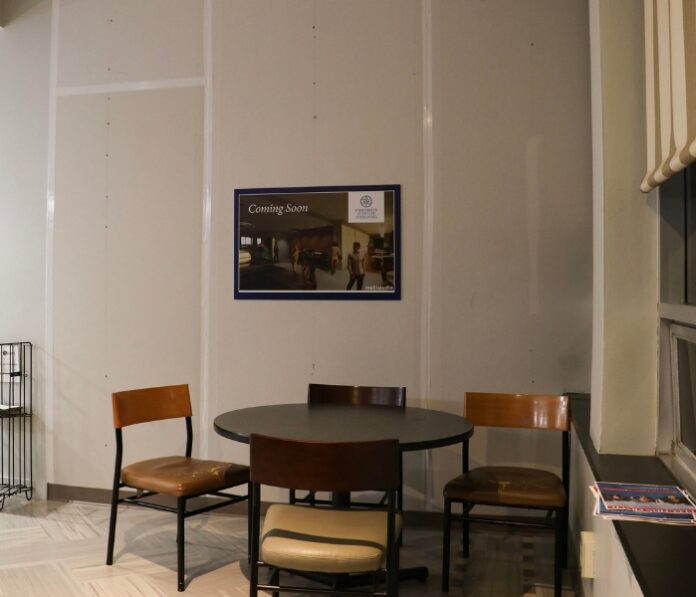Disclaimer: All articles published within the Commentary Section are the opinions of the respective authors and do not necessarily reflect the opinions of The Cor Chronicle
I spent the first three semesters of my time at the University of Dallas in the Cap Bar. This spot was my opportunity for a study space, social interaction, and involvement in campus life.
However, since returning from Spring Rome the atmosphere on campus has not been the same. The loss of outside eating, study and hangout space in the Cap Bar and smoking on the Mall have all contributed to a deteriorating sense of community.
The loss of the Cap Bar and the Mall as natural meeting spots prevent spontaneous interactions and conversations between students, particularly between underclassmen and upperclassmen. While all of these changes have legitimate reasons and possible solutions, the seemingly unintended consequences on campus life are real and strongly felt.
Many students comment that they “never see anyone on the Mall anymore.” The Mall, once full of life and people, now feels barren and almost uninhabited. This comes mainly from the loss of the privilege to eat outside without a green box.
While the green boxes are easy to acquire, it is an extra step that few seem to take when going through the Caf. This, alongwith the removal of smoking on the Mall, causes it to no longer be the center of life on campus. The natural and regular congregation of people for the purposes of eating and smoking is gone. There are sometimes events that take place on the Mall in an attempt to simulate the previous atmosphere but they quickly die out as students continue on their way to classes.
The second heart of campus, the Cap Bar, has also drastically changed. Though renovations will provide students with other places to eat on campus, at present they must suffer through a transactional version of the beloved Cap Bar. There no longer exists a study culture, nor a chance for social interaction. Instead, the Cap Bar feels like a commercial coffee shop, devoid of the very things that it was created to provide.
Though these renovations have an end date, the shift in campus life this fall semester has affected many students. In previous years, students would walk into the Cap Bar area and be able to have stimulating conversations with friends or acquaintances as they waited for their coffee. Now, the only conversations that occur are brief greetings before each student orders and goes their separate ways.
Though there were never enough tables, previous semesters saw the space constantly filled with students learning and socializing. Conversations in the Cap Bar could last for hours as students slowly drank their coffee and pretended to study. Now that there are only two instead of twelve tables, the natural attraction to the area as a study spot is gone.
The natural lighting that gave the space a warm and welcoming atmosphere has also disappeared. These losses of natural lighting and tables are two of the main factors that contribute to the current reality of the Cap Bar: a sterile space with neither natural congregations of people nor building of community.
While the loss of the Mall or the Cap Bar as a center of campus life would have been unfortunate individually, together they present the devastating reality that there is no longer a point of natural congregation on campus. This loss is quickly leading to a stronger disconnect between upperclassmen and underclassmen because the only place on campus that allows for any sort of gathering is the cafeteria.
The void of natural meeting spots presents a challenge for building community on campus. Although there are possible solutions to this challenge, it necessitates creativity and flexibility from UD students as they attempt to regain the strong sense of community which is fundamental to their culture. While the reasons behind each decision are legitimate, the consequences on campus life and the UD community seem to not have been factored into the cost.
Eleanor Hamlet is a junior Spanish and Theology major.
